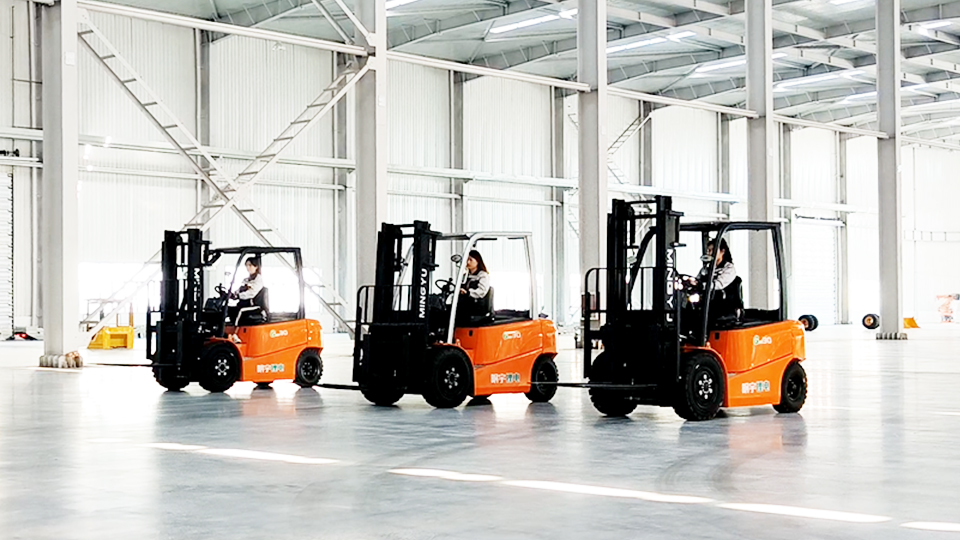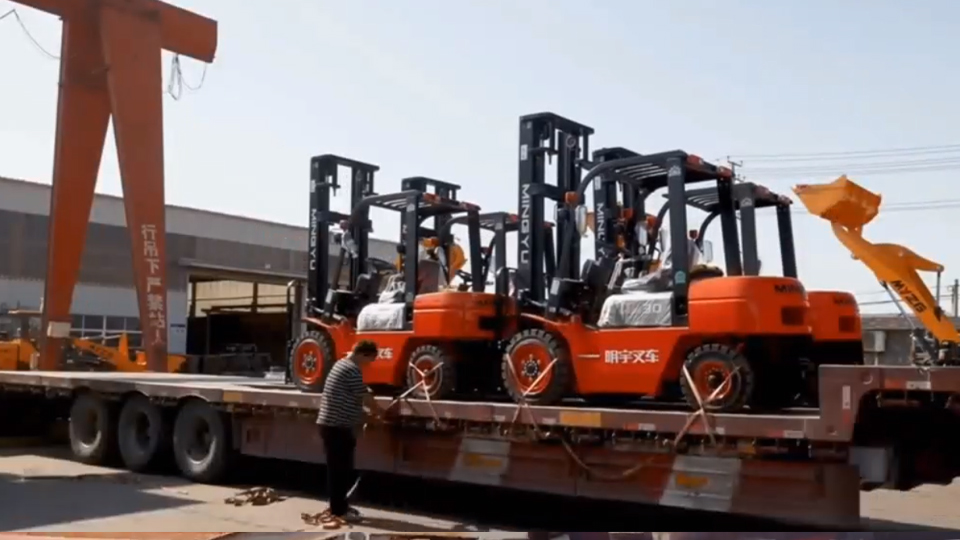
Abstract
The operation of a Powered Industrial Truck (PIT), commonly known as a forklift, is a highly regulated activity in industrial and commercial environments. The question of "how old to get forklift certified?" is fundamentally an intersection of workplace safety law, specifically the U.S. Occupational Safety and Health Administration (OSHA) regulations and the Fair Labor Standards Act (FLSA), with the technical requirements of operator competency. This technical article systematically details the mandatory minimum age for forklift operation in the United States, examines the legislative basis for this restriction, discusses the core elements of the required training and certification process, and analyzes the limited exceptions, such as those found in agricultural settings. The primary finding is that, in almost all non-agricultural employment settings in the U.S., the absolute minimum age to be authorized, trained, and certified to operate a forklift is 18 years old.
1. Introduction: The Regulatory Framework
Forklifts are powerful, heavy machines integral to modern logistics and material handling. Their operation carries significant inherent risks, including tip-overs, collisions, and struck-by hazards. Regulatory bodies mandate rigorous training and age restrictions to mitigate these dangers.

In the United States, two key federal statutes govern the age and competency of forklift operators:
The Fair Labor Standards Act (FLSA): This Act contains child labor provisions that prohibit minors from engaging in "hazardous occupations."
The Occupational Safety and Health Act (OSH Act) and OSHA Standards (29 CFR 1910.178): This mandates that all operators, regardless of age (provided they meet the minimum), must be trained, evaluated, and certified as competent by their employer.
The age requirement is a prerequisite to the training requirement. An individual cannot legally begin the OSHA-mandated training and subsequent certification process until they meet the legal minimum age to operate the equipment.
2. The Mandated Minimum Age: 18 Years Old
2.1 The Fair Labor Standards Act (FLSA) Prohibition
The definitive minimum age for forklift operation in the vast majority of non-agricultural employment settings in the United States is 18 years old. This is not an OSHA standard in itself, but a child labor provision under the FLSA.
The specific regulation is found in the Child Labor Provisions, under 29 CFR 570.58 - Occupations involved in the operation of power-driven hoisting apparatus (Hazardous Occupation Order No. 7). This order explicitly prohibits the employment of minors under 18 years of age from operating, among other types of lifting equipment, powered industrial trucks.
The prohibition is based on the Department of Labor's determination that operating such equipment is inherently hazardous for young workers who may lack the maturity, judgment, and experience necessary to manage the complexity and risks associated with forklifts. Violations of this act can result in substantial penalties for the employer, regardless of whether an accident occurs.
2.2 The OSHA Enforcement Context
OSHA's standard for Powered Industrial Truck Operator Training (29 CFR 1910.178(l)) governs how an operator is trained, but its application implicitly rests on the FLSA age restriction.
OSHA's Stance: OSHA explicitly informs employers that it is a violation of Federal law for anyone under 18 years of age to operate a forklift. An individual may be trained only if they are permitted to operate the equipment they are being trained on. Since the FLSA prohibits those under 18 from operation in general industry, they cannot legally be certified.
Certification vs. Licensing: It is a critical technical distinction that the "forklift certification" is a verification of competency issued by the employer, not a government-issued "license" (like a driver's license). The employer is certifying that the operator meets both the legal age requirement and the technical competency standards set by OSHA.
3. The Technical Requirements for Certification (Post-Age-18)
Simply turning 18 years old does not automatically grant the right to operate a forklift; it only makes an individual eligible to begin the process. The actual certification requires adherence to rigorous, three-part OSHA training standards.
3.1 Component 1: Formal Instruction (Theoretical Training)
The first component involves the acquisition of theoretical knowledge. This can be delivered through classroom lectures, online courses, video presentations, or written materials. The required topics are technical in nature and cover:
Forklift Dynamics: Principles of stability, load center, center of gravity, and the "stability triangle."
Operational Controls: Location and function of all controls, instrumentation, and the engine/motor operation.
Pre-Shift Inspections: Mandatory daily (or shift-based) inspection procedures, including required checks on fluid levels, tires, horn, lights, and control functionality.
Workplace Hazards: Understanding site-specific hazards such as floor condition, congested areas, pedestrian traffic, ramp operations, and hazardous materials handling.
Load Handling: Safe methods for picking up, placing, stacking, unstacking, and transporting different load types, including limitations on load capacity.
Refueling/Recharging: Safe procedures for refueling gasoline/LP trucks or recharging electric batteries, including proper ventilation and management of the sulfuric acid/hydrogen gas hazard.
3.2 Component 2: Practical Training (Hands-on Experience)
Following theoretical instruction, the trainee must receive supervised, hands-on practice. This involves operating the specific type of Powered Industrial Truck (PIT) they will use on the job site. Technical requirements include demonstrating proficiency in:
Steering and Maneuvering: Navigating tight spaces, reversing, and making controlled turns.
Load Manipulation: Controlled lifting, lowering, tilting, and spotting of loads at various heights and locations.
Dock Operations: Safely approaching and entering trailers, including securing the vehicle and trailer (e.g., using wheel chocks).
Hazard Response: Successfully executing emergency procedures, such as proper stopping distance and safe shutdown.

3.3 Component 3: Performance Evaluation (Certification)
The final step is a formal, practical evaluation conducted by the employer or an authorized third-party trainer. This evaluation confirms the operator's competency and is the act of certification.
Competency Test: The operator must demonstrate, on the specific equipment and in the specific workplace, that they can safely perform all required tasks.
Documentation: The employer must document the successful completion of the formal training, the practical training, and the final evaluation. This record must include the name of the operator, the date of training and evaluation, and the identity of the person who conducted the training/evaluation. This documentation constitutes the official certification.
4. The Agricultural Exception: Age 16
The most notable exception to the 18-year-old minimum age is found in agricultural work.
4.1 FLSA Agricultural Exemption
Under specific conditions within the FLSA, an individual as young as 16 years old may be permitted to operate a forklift in an agricultural setting. This exemption acknowledges the historical and operational realities of farm work, which often utilizes younger family members or seasonal labor.
Conditions: Even in agriculture, the operation must be done safely, and the younger operator must still receive adequate instruction and supervision. The intent is to allow older adolescents to operate farm-related equipment necessary for harvest or material movement, but this is a complex legal area and employers must consult detailed DOL and state-specific agricultural labor laws to ensure compliance.
5. Maintenance and Recertification Requirements
The initial certification is not permanent. To ensure sustained operator competence, OSHA mandates ongoing evaluation:
Validity Period: Forklift certification is valid for a maximum of three years.
Mandatory Re-Evaluation: An operator must be formally re-evaluated by the employer at least once every three years. The employer must observe the operator performing tasks and re-certify their competence.
Retraining Triggers: Retraining (including both formal and practical instruction) is mandatory before the three-year period if any of the following events occur:
The operator is involved in an accident or a "near-miss" incident.
The operator is observed operating the truck unsafely.
The operator receives an evaluation that indicates a lack of safe operating skills.
The operator is assigned to drive a different type of truck (e.g., switching from a counterbalanced truck to a narrow-aisle reach truck).
A change occurs in the workplace conditions that could affect safe operation (e.g., new racking, different loading dock procedures).
6. Conclusion
The minimum age to operate a forklift and therefore to be eligible for certification in the United States is strictly mandated by federal law. The age of 18 years old is the legal threshold established by the Fair Labor Standards Act to protect young workers from engaging in a hazardous occupation.
Forklift certification is a technical process that extends far beyond simply meeting the age requirement. It is an employer's documentation of an operator's verified competency following structured theoretical instruction and rigorous practical evaluation, as stipulated by OSHA standards. For any employer or aspiring operator in non-agricultural commerce, adherence to the 18-year-old minimum age is the non-negotiable legal starting point for engaging in a safe, skilled, and regulated industrial occupation.
Name: selena
Mobile:+86-13176910558
Tel:+86-0535-2090977
Whatsapp:8613181602336
Email:vip@mingyuforklift.com
Add:Xiaqiu Town, Laizhou, Yantai City, Shandong Province, China